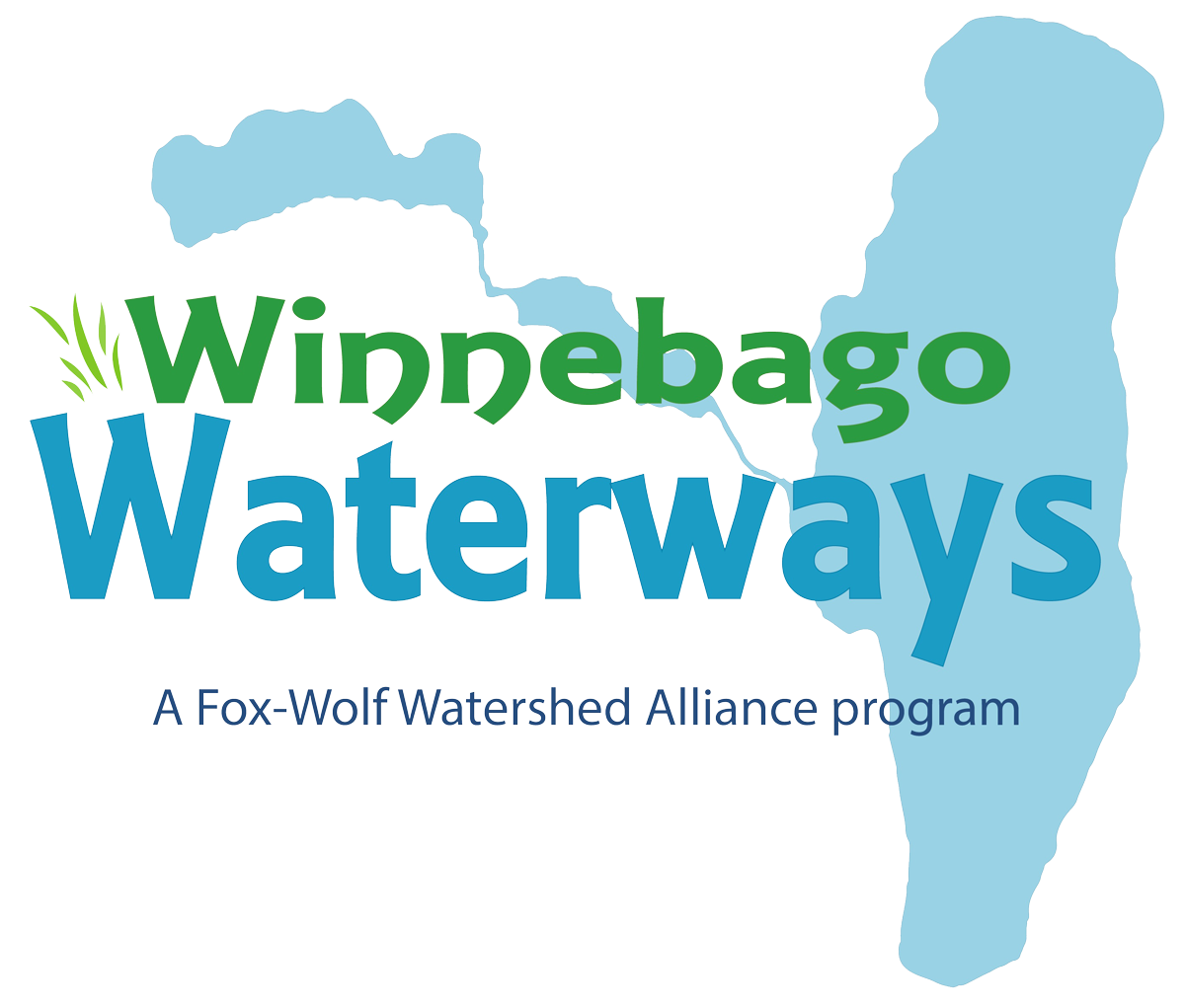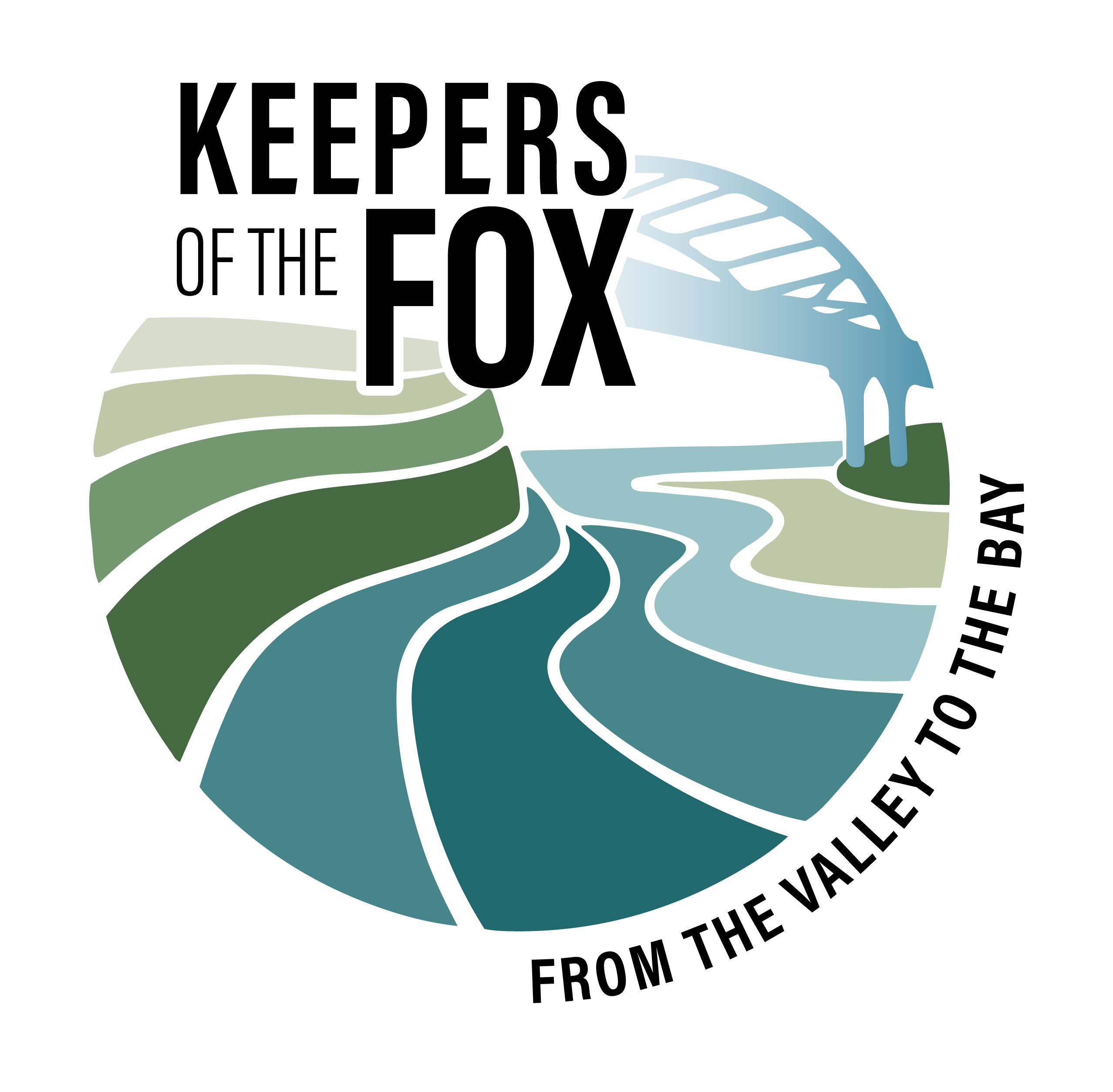There are a variety of conservation best management practices in use across our basin. Some of these practices fall into the category of soil health practices such as cover crops, no-till, and low-disturbance manure application; these are often referred to as “soft” practices as they need to be adopted each year. Other practices are engineered or “hard” practices and are installed on the landscape as a permanent or semi-permanent structure. Both types of conservation best management practices have significant benefits to water quality, and the flexibility in the type of practice installed gives producers the opportunity to choose what works best for them on their farm. Agricultural runoff treatment systems (ARTS) are one type of engineered practice that is gaining traction in the Fox-Wolf basin for their use to capture runoff and provide water storage.

The ARTS System Constructed and Maintained by the Heart of the Valley Metropolitan Sewerage District
ARTS were developed through a 2015 GLRI grant to install constructed wetlands adjacent to agricultural fields. The grant work led to a system that combined multiple accepted conservation practices – a sediment basin, constructed wetland, structure for water control, grade stabilization structure, and a pond – to enhance the wetland to treat runoff at the edge of agricultural fields. Since 2017, four ARTS have been installed in Outagamie and Brown Counties in Plum Creek watershed.
Intensive and dedicated monitoring by USGS and University of Wisconsin-Green Bay at two of these sites has demonstrated the water quality benefits including greater than 60% particulate phosphorus and 80% suspended solids load reductions annually. Through the water quality monitoring, the need for additional capture of dissolved phosphorus became evident and Outagamie County has been working with soil scientist Chad Penn from USDA’s Agricultural Research Service to design a Phosphorous Removal System (PRS) at the end of the ARTS system. Using Dr. Penn’s P-TRAP modeling software, future ARTS systems will be designed using criteria including site size, filter media, desired lifetime, and flow rate to choose the specifications and filter media that are most suitable for each site. (Click here to learn more about P-TRAP)
As shown in the illustration below, water runs to the ARTS system via surface water runoff and subsurface drain tile. The water is captured in the Sediment Forebay, where it is held to allow sediment to fall out. As the Forebay fills, water flows over the Gravel Spreader and into Treatment Wetland Cell #1 and then into Treatment Wetland Cell #2. While in the Cells, wetland plants take up phosphorus for plant growth and additional sediment sinks to the bottom. A Water Control Structure is installed at the end of the ARTS system to meter water out and through the Phosphorus Removal System (PRS) which contains filter media to absorb the remaining phosphorus. After the water is held sufficiently long in the PRS to allow for treatment, it is discharged at a controlled rate to allow for infiltration into the soil nearby.
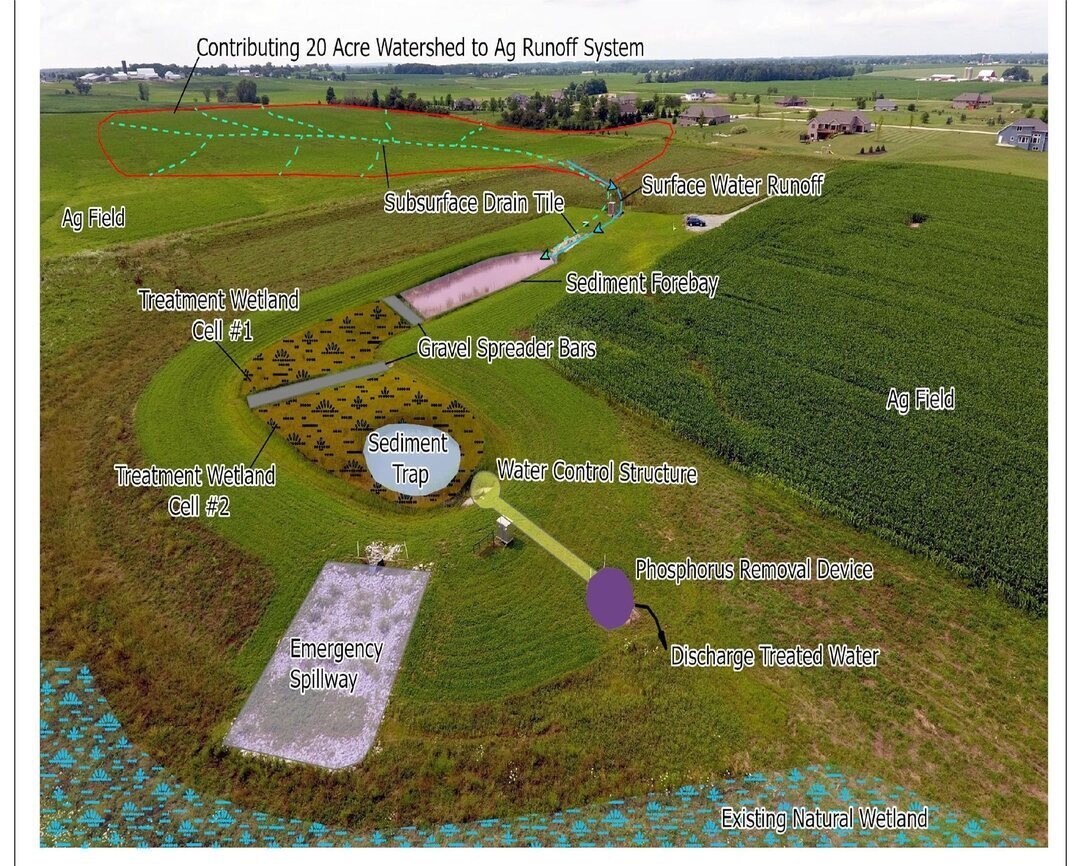
Along with reductions in phosphorous and suspended solids, ARTS provide additional benefits including:
- Water Storage
Changing land use has eliminated wetlands, taken away water storage, and mixed agricultural and urban land use in close proximity. Eliminating places for precipitation and snow melt to collect coupled with the frequency of heavy rain events has created a system prone to flooding and soil runoff. By reestablishing water storage, the quantity and velocity of water is slowed and retained, benefitting flood-prone areas and keeping valuable topsoil in place.
- Slow the Flow of Water Downstream
A lack of water storage and increase in flashy storm events means water moves across the landscape at a high velocity. This fast moving water degrades stream banks and picks up sediment. By slowing the flow of water, downstream areas can be restored without risk of projects being washed out and streambanks can return to their natural conditions.
- Wetland Habitat Creation
Through land development, natural fish and wildlife habitat has been lost or degraded. Wetland creation and streambank restoration practices coupled with reduced sediment and nutrients in water bodies create environments that allow fish and wildlife to flourish.
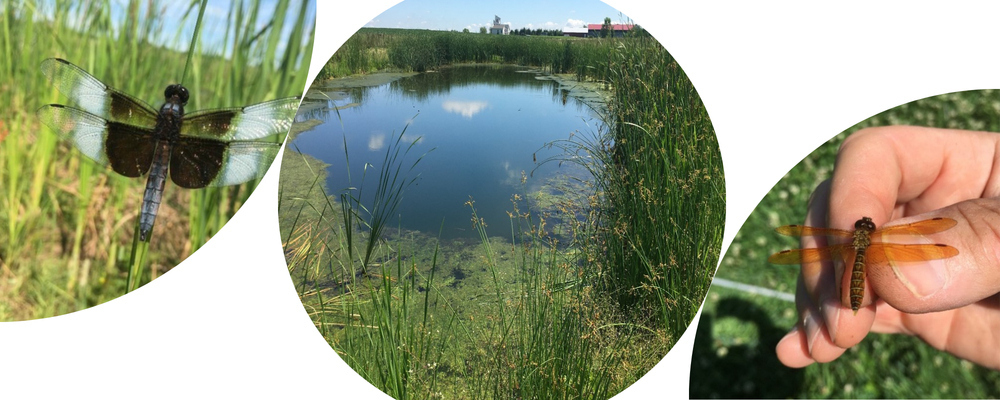
In August of 2022, Outagamie County coordinated a site visit to the Heart of the Valley Metropolitan Sewerage District (HOV) ARTS site in the Town of Buchanan. The ARTS at this location was installed by HOV through their adaptive management and water quality trading program to meet phosphorous reduction goals that were assigned to their wastewater treatment facility. HOV takes great pride in making the site available and easily accessible for public tours to showcase the benefits of the system.
Outagamie County’s Jeremy Freund led the site visit with water quality monitoring data support by UWGB’s Kevin Fermanich. Chad Penn answered questions from the group about type, quantity, and cost of filter media as well as utilizing the P-TRAP software to design a PRS that maximizes the phosphorus reduction capabilities.
While the ARTS is a new twist on existing conservation practices already being used in the Fox-Wolf basin, work to utilize PRS systems to meet phosphorus reduction goals is happening across the nation. We are excited to continue to advance this best management practice, and grant projects to install ARTS in Brown, Outagamie, and Calumet County are underway now. These projects will further refine the practice and continue to illustrate the benefits for adoption across the basin.
Staff from around the watershed gathered to learn more about the ARTS. Represented agencies included Outagamie, Brown and Calumet Counties, Fox-Wolf Watershed Alliance, USGS, NRCS, USDA, and UWGB
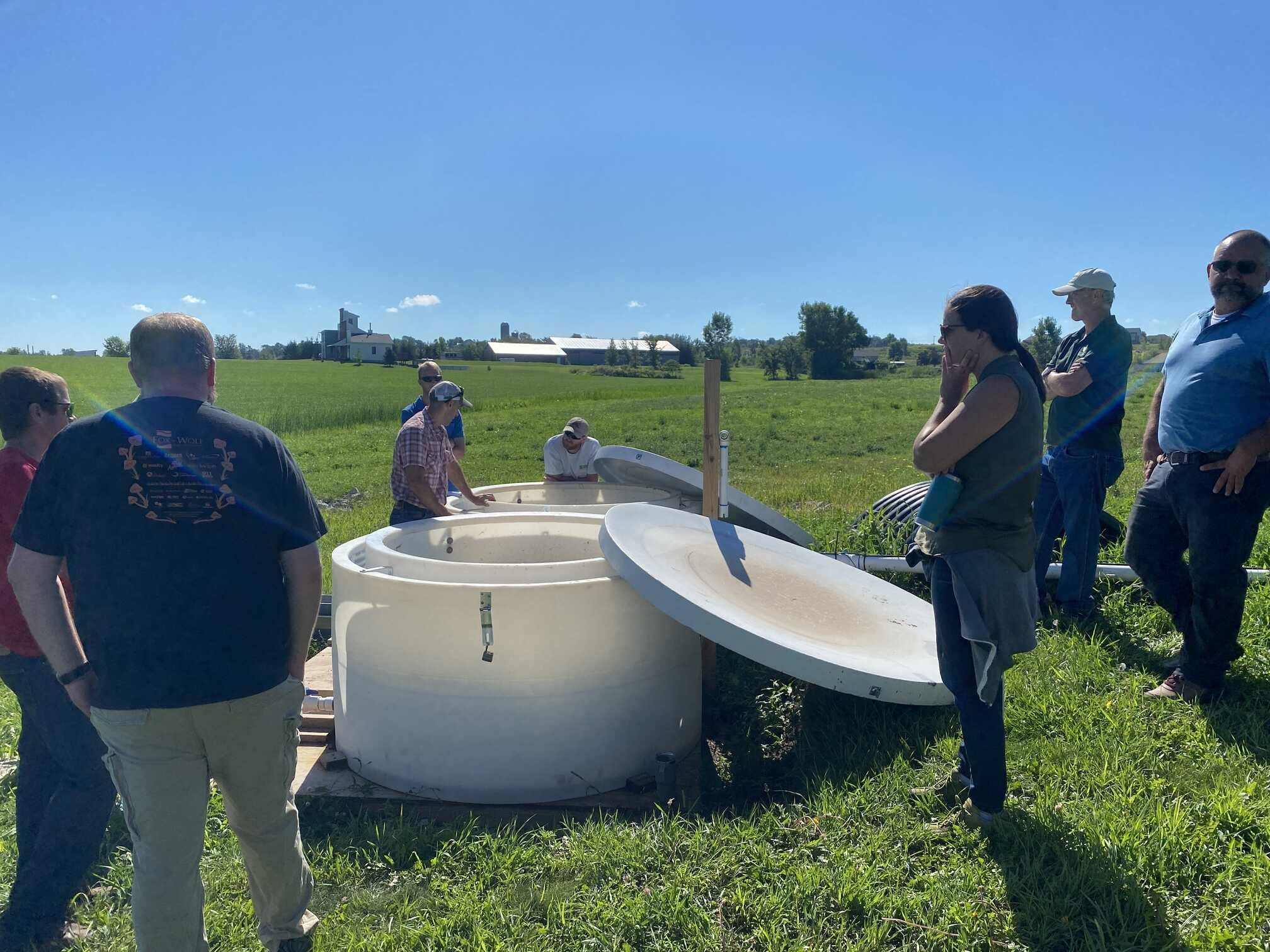
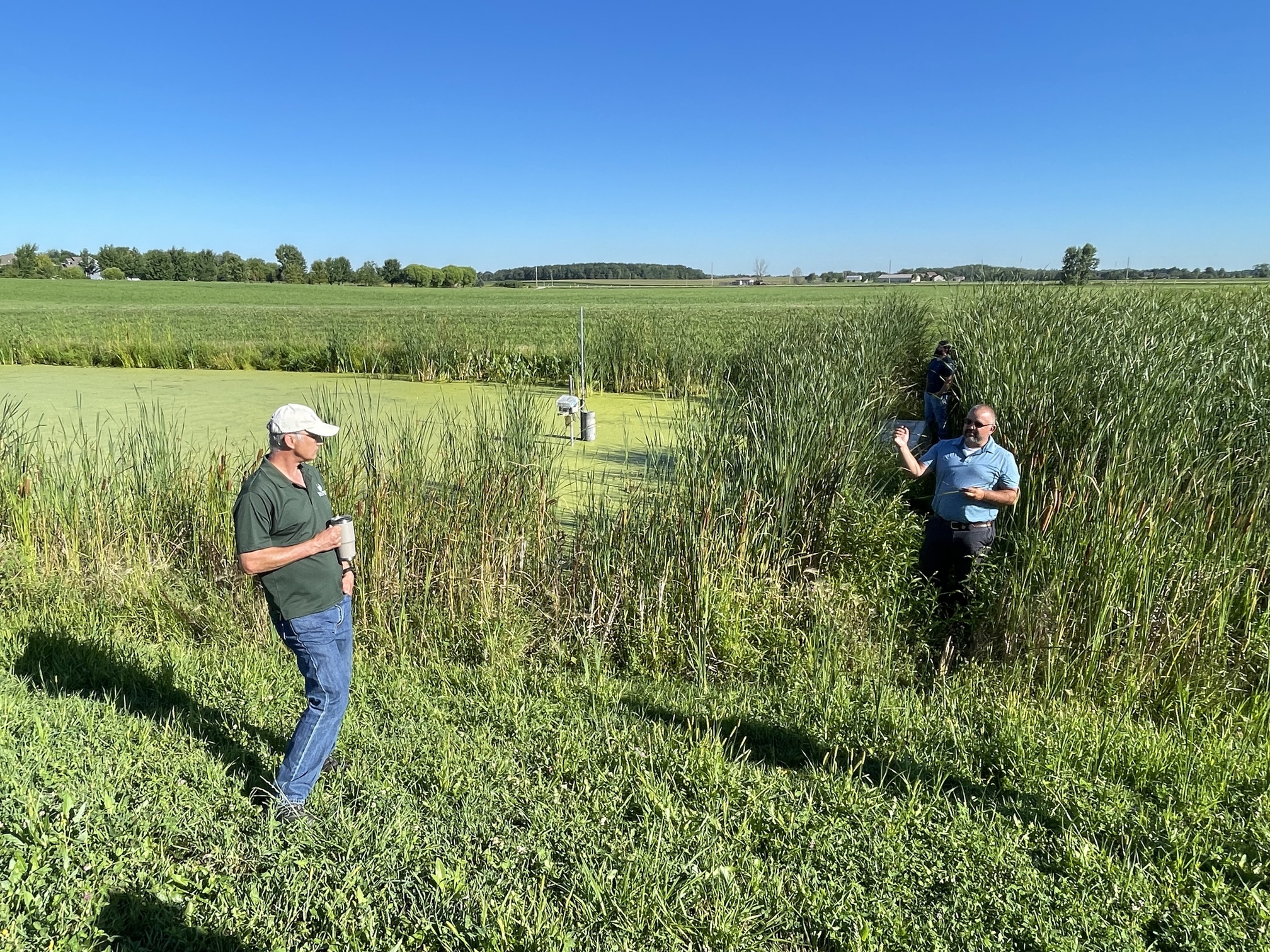
UWGB Professor Kevin Fermanich and Outagamie County Project Manager Jeremy Freund illustrate the gravel spreader bar and sampling station
The tour group examines the phosphorous filter media trial stations and Chad Penn, a Soil Scientist with the USDA Ag Research Service, answers questions about modeling reductions using the P-Trap software
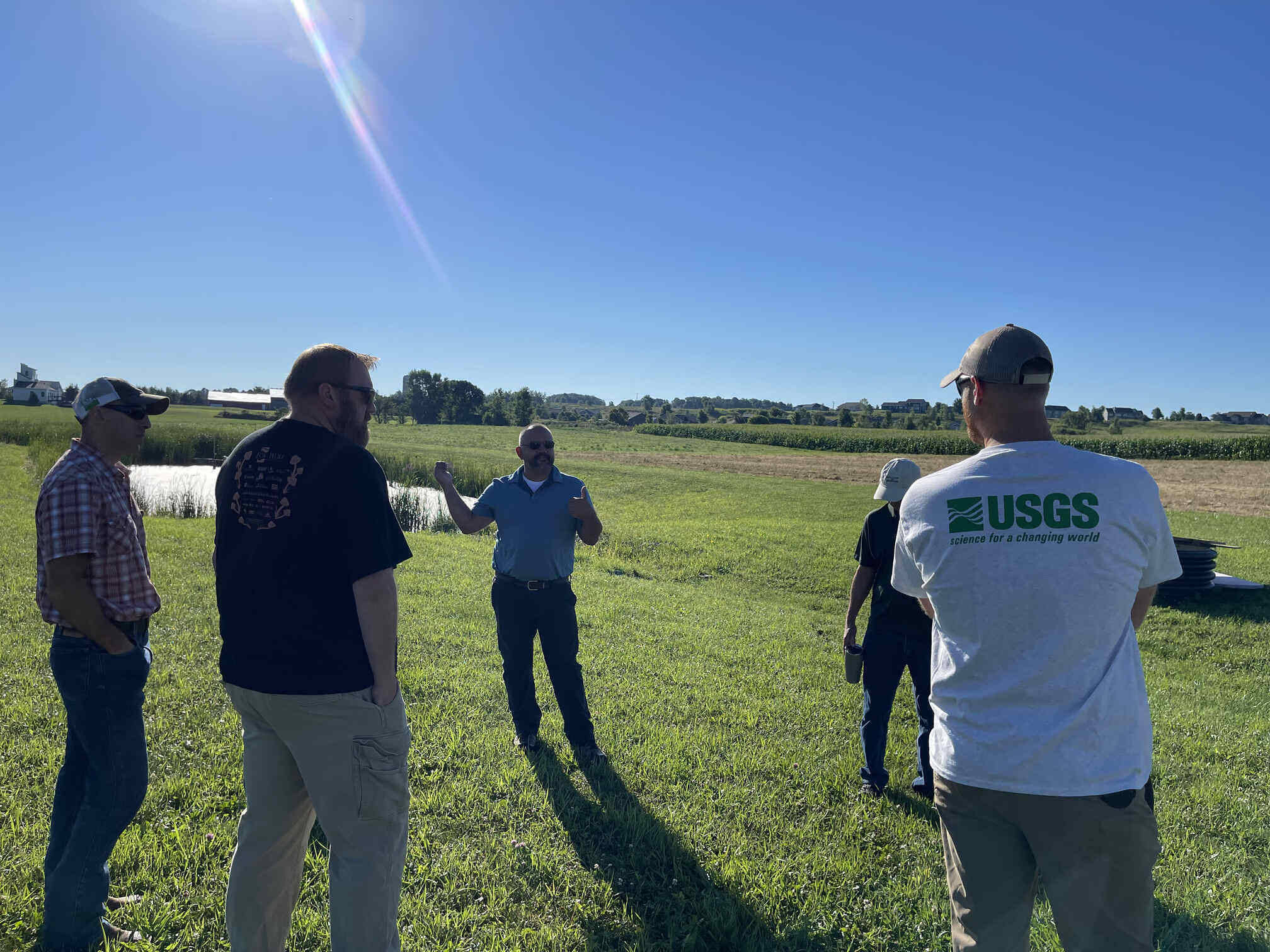
Questions? Contact us:
Climate Smart Agriculture Project Manager: Katie Woodrow, 920.915.5767 or katie@fwwa.org
To receive periodic updates on these projects as well as many others, please subscribe to our newsletters: CLICK HERE

